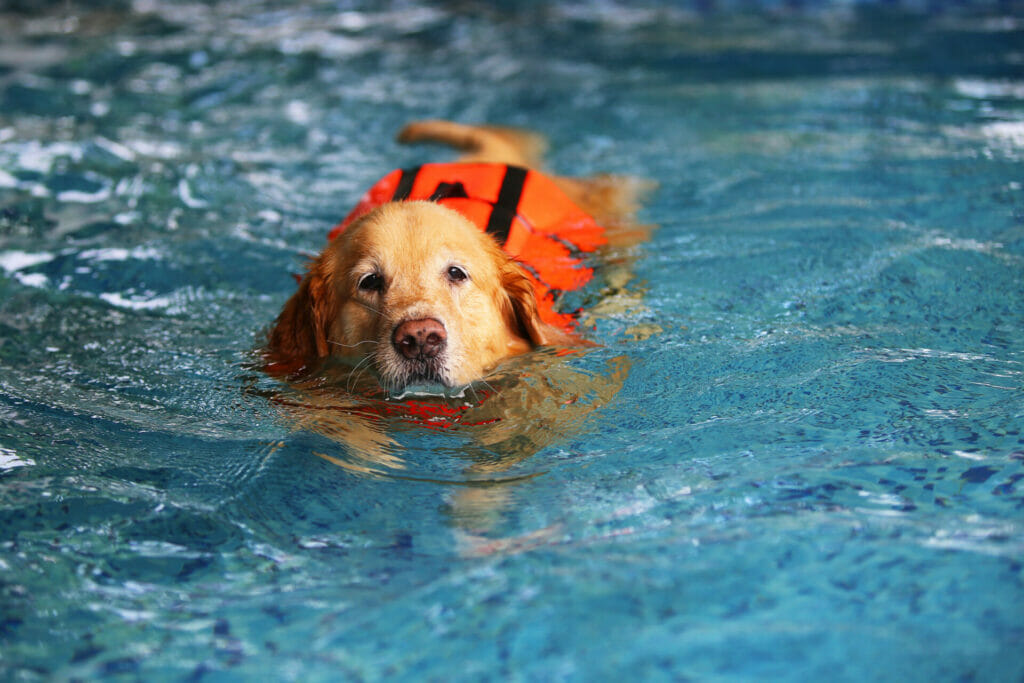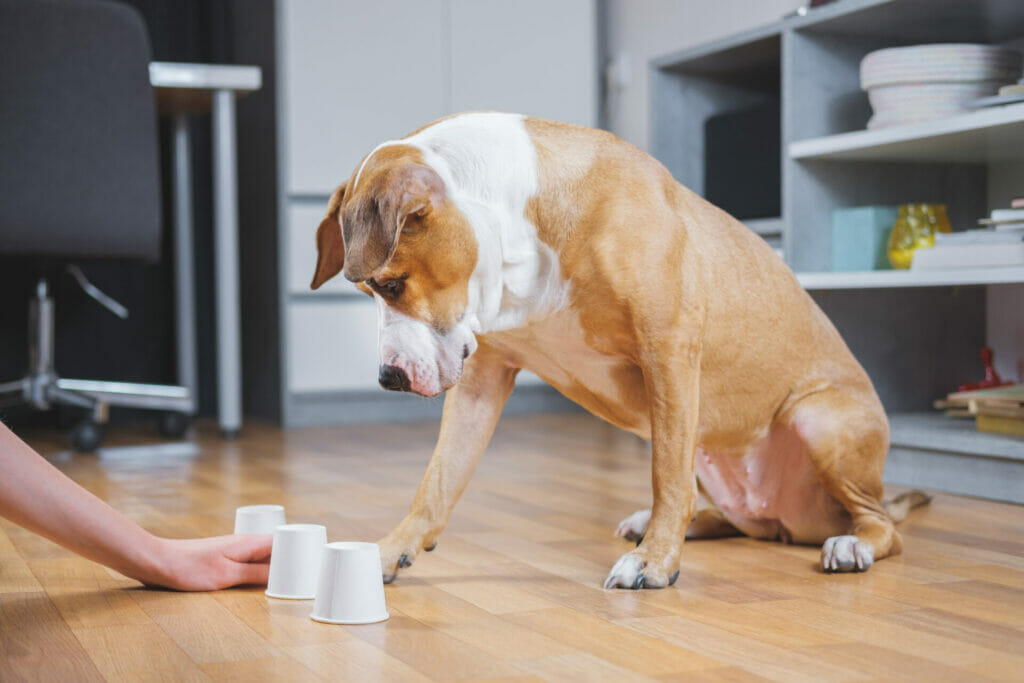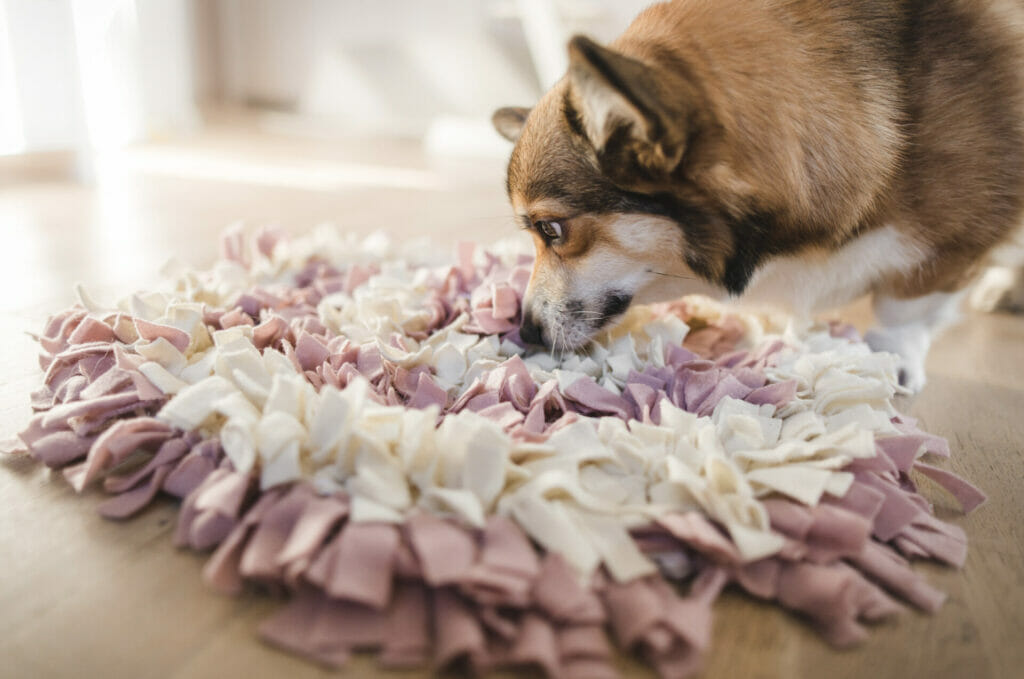Enrichment is important for dogs of all ages, but unfortunately, when it comes to senior dogs many people ignore their needs assuming these dogs are set in their ways and just want to sleep. Although many senior dogs start to slow down as they age it’s important to keep them mentally and physically active. Adding enrichment into your senior dog’s life is a great way to maintain and even increase the bond you have with your dog. In addition, keeping your senior dog active and engaged can help your dog to age gracefully and help slow, delay, or even prevent age-related illnesses.
Safety First:
If you have an older dog and are wanting to increase the amount of enrichment your dog is getting it’s important to schedule a general wellness visit with your dog’s veterinarian. Your vet will be able to provide your dog with a full health screening to determine if they have any underlying medical conditions, or age-related conditions like arthritis which may need treatment, anti-inflammatories, or pain management. Talk with your dog’s veterinarian about the kinds of activities your dog enjoys and inquire if there are any limitations or considerations to keep in mind. Also, discuss any new activities you’re interested in doing with your dog to see if they have any concerns or recommend any modifications.
Follow Your Dog’s Lead:
When considering enrichment activities for your senior dog, consider the kinds of things your dog likes best. Although they may be slowing down, from playing ball to hiking or swimming, many senior dogs can continue to do the activities they enjoy as they age. Watch your dog closely as you play and train for any sign that your dog seems stiff or uncomfortable. If your senior dog has historically enjoyed higher impact activities like Dog Agility your veterinarian will be able to help you devise a plan for how to modify exercises and activities to be safer or more comfortable for your senior dog.

Low Impact Dog Enrichment Games:
One of the best ways to keep senior dogs mentally and physically active is to build low-impact enrichment into your dog’s daily routine. These are dog enrichment games that keep your dog active but aren’t strenuous on your dog’s joints. A simple way to provide low-impact enrichment is to start feeding your dog their meals in slow feeder bowls which instead of a smooth inside have raised ridges that encourage dogs to slow down and engage with their meals. You can also make or purchase snuffle mats. These are fabric mats with raised fabric flaps and strips. You can sprinkle your dog’s dry food or treats into the mat. These mats turn mealtime into an interactive enriching activity. Snuffle mats channel a dog’s natural foraging skills and encourage them to utilize their sense of smell.

Trick Training:
The idea that you can’t teach an old dog new tricks couldn’t be further from the truth. Tricks aren’t just for puppies, in fact teaching senior dogs new tricks is an excellent way to keep their minds and bodies conditioned. Trick training can be as simple as practicing basic behaviors like sitting, down, or shaking to teach your dog more advanced skills and behaviors. Tricks are even now an official sport and you and your dog can earn titles via video submission with DMWYD and the AKC. One of the benefits of tricks as a sport is that it’s very flexible, versatile, and filled with low-impact options making it an ideal sport for senior dogs to succeed at their own pace.
Scent Games:
One of the best forms of enrichment you can do with senior dogs is to give them outlets to use their natural scent abilities. A simple way to do this is to stop hurrying your dog along on walks and instead encourage them to take “sniffy walks” where your dog is controlling the speed and so long as they are safe dogs are allowed to stop and sniff anything they want. Dogs experience so much of the world through their sense of smell and giving them sniffing outlets is an easy way to provide senior dog-friendly enrichment. To engage your dog in scent games at home you can hide treats or toys and encourage your dog to find them. You can also take empty boxes before you recycle them and put food or treats into some of them to create a simple scent puzzle for your dog to solve. If you find your dog really enjoying sniffing things out, you may even want to explore the sport of canine scent work/network. Many communities will have scent work classes where dogs of all ages including seniors can learn to identify different scents and then compete as they alert their handler to the hidden location of the odor.

It’s hard to watch our senior dogs start to slow down but adding enrichment to your senior dog’s life can support them in aging gracefully. Keeping senior dogs mentally and physically active within their limitations can help improve your older dog’s quality of life. Consult with your dog’s veterinarian to determine if your dog has any ongoing health concerns or limitations on their physical activities. Then, when considering enrichment options for senior dogs, focus on the activities that your dog likes best and find ways to adapt them to your dog’s slower pace or newfound limitations. Enrichment activities can help senior dogs to age more gracefully and be happier and more fulfilled.




















